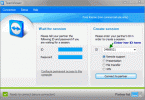When you’re building an agile design team, pitfalls abound. These pitfalls can easily disrupt your efforts and throw your entire organization off-kilter.
Many brand-new agile teams make serious mistakes because they lack experience, proper coaching, and the necessary support. To help prevent these errors for your team, we’re going to share 10 tips to make your agile team run smoothly.
1. Eliminate Fear
When team members are experiencing fear, they are experiencing a powerful emotion that can often get the best of them. Fear often entices people to make bad decisions and this can be very frustrating to the other members of your agile team.
The best way to eliminate fear is to create a team that trusts one another. If possible, use online fundraising to raise money to take a trip as a team where you can perform team building exercises.
After you’ve gone through these exercises, your team will trust each other implicitly and there will no longer be any fear of bad decision-making in the workplace.
2. Improve Communication
There’s going to be a lot of trouble amongst your team if the members do not regularly communicate with one another every day. Face-to-face communication is an absolute must. It’s the best way to discover potential blockers and issues. So dedicate a specific area for your team to foster collaborative communication. Or create a visual online communication platform if your team works remotely.
3. Create the Ideal Team Structure
The two most important characteristics of agile teams are that they are stable and cross functional. By having a stable team, you create one that will be able to grow together. And a cross functional team possesses the skills that let them move a user story to conclusion.
Make sure your team consists of testers, tech writers, coders, and anyone else that can make the team more valuable and effective.
4. Create Effective Estimation Habits
It can be really difficult to estimate the scope and size of new work. This is especially true if you are part of a new agile team.
By creating effective habits, it will be a lot easier for your team to perform estimation.
One habit is to let management know that the team must have 2 or 3 inception sprints to get a feeling for their initial velocity. Your team must know how quickly they will be able to complete work before accepting projected deadlines for the feature set.
5. Time & Productivity Tracking
It’s often difficult for a team to figure out where they need to improve if they aren’t tracking their workflow. By using Clockspot, powerful online time tracking software, the team can track all levels of productivity and work together accordingly. This will help them improve their ability to meet and exceed projected deadlines.
6. Focus on Customer Feedback.
Customers provide valuable insight regarding functionality and features. Focus on customer input and use this to improve workflow. So look over customer feedback and review the requests that are most popular when grooming the planning and backlog.
7. Have Proper Testing in Place
Agile teams are powerful because they not only deliver software faster, but they also deliver higher quality software as well. This comes with proper testing, so make sure you have testers in place on your cross functional team.
8. Make Sure Your Team Is Empowered
During the agile process, you must take three steps to make sure your team is empowered. First, invite members to engage and participate in planning. Second, ask for team member insight on the proposed set of work. And third, respect the value of each team member’s insight.
9. Have a Plan for Resistance
When switching to an agile team, some team members may resist the process. Have management communicate with team members and let them know that they are in full support of team successes and not particularly concerned with individual successes any longer.
10. Have Demo and Retrospective Meetings
To complete the inspect-and-adapt cycle, you need to have meetings that conclude releases and iterations acting as bookends. This should happen at all levels, and the meetings should even include a retrospective aspect.
Conclusion
Please use these 10 tips to create a more agile team.






Leave a Comment